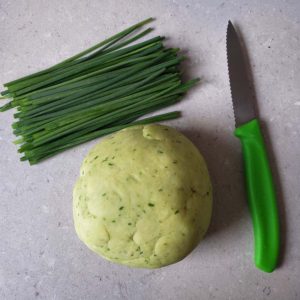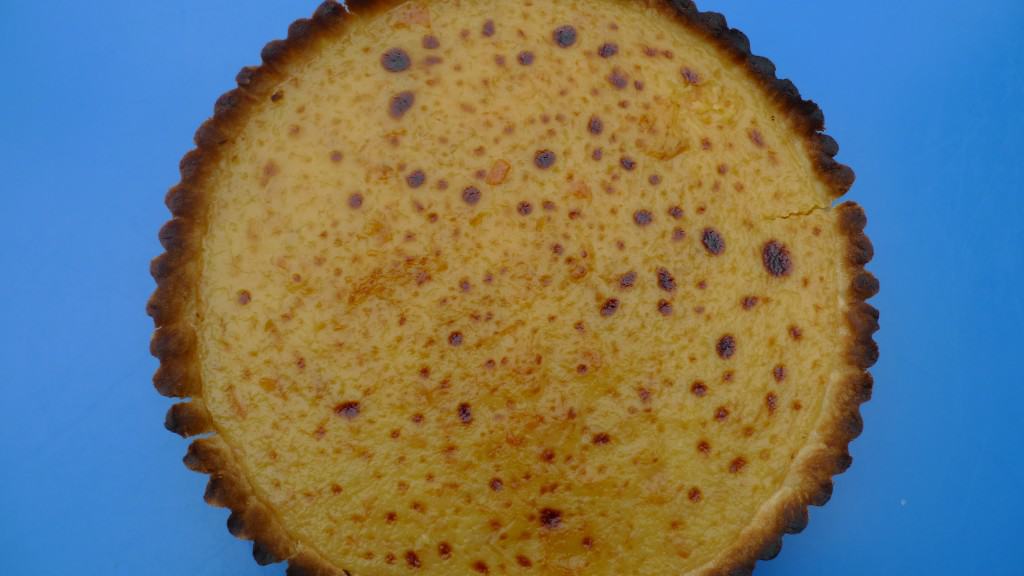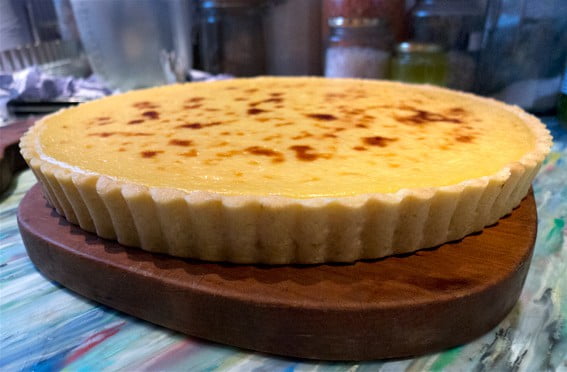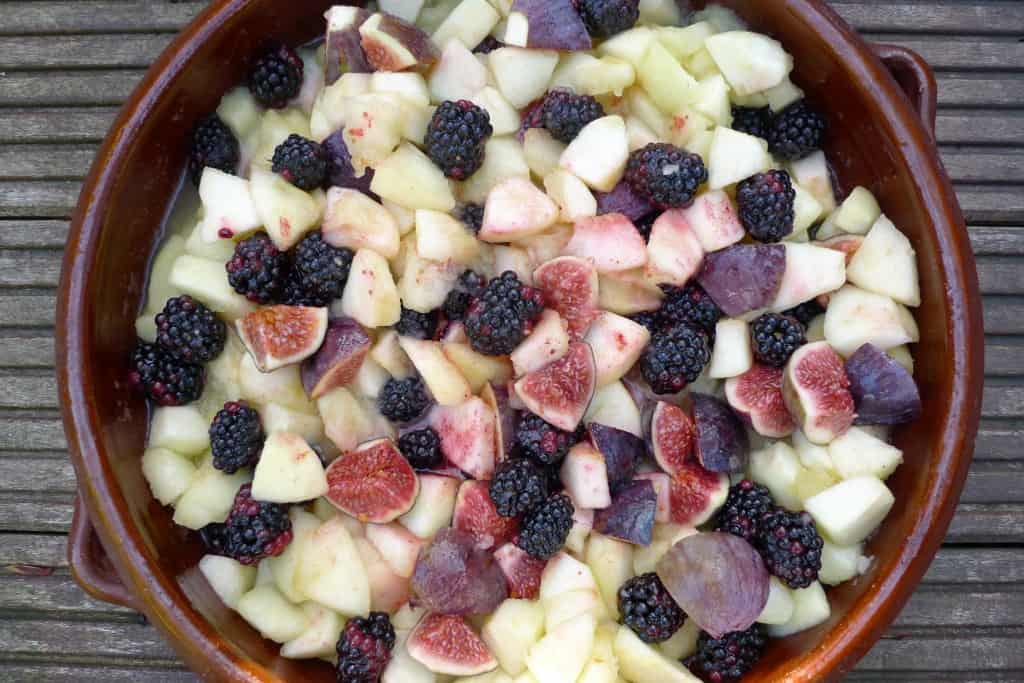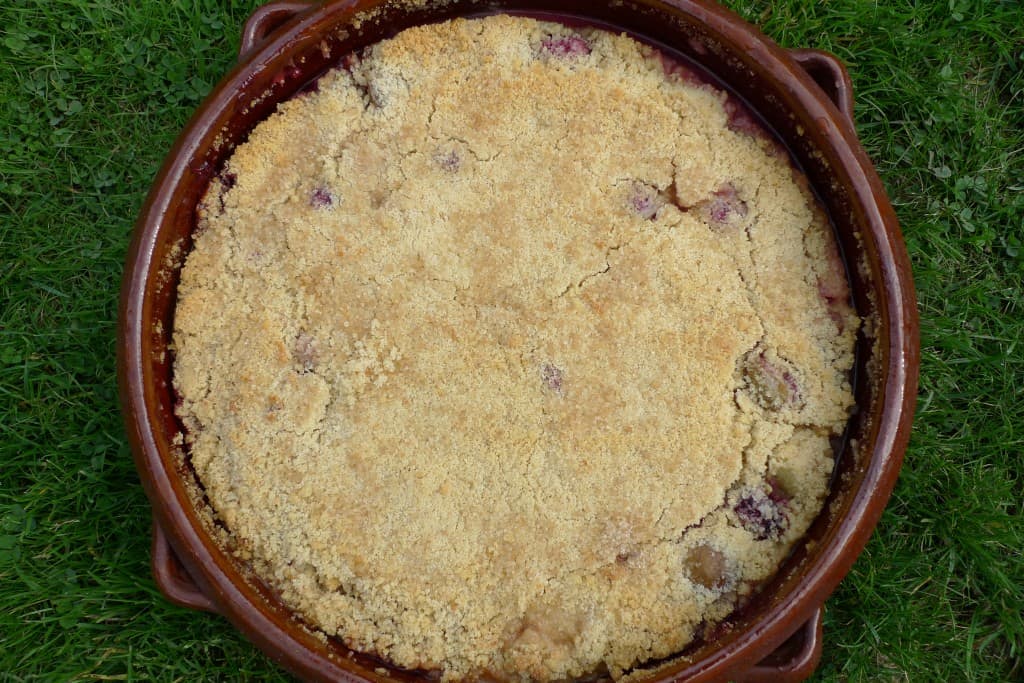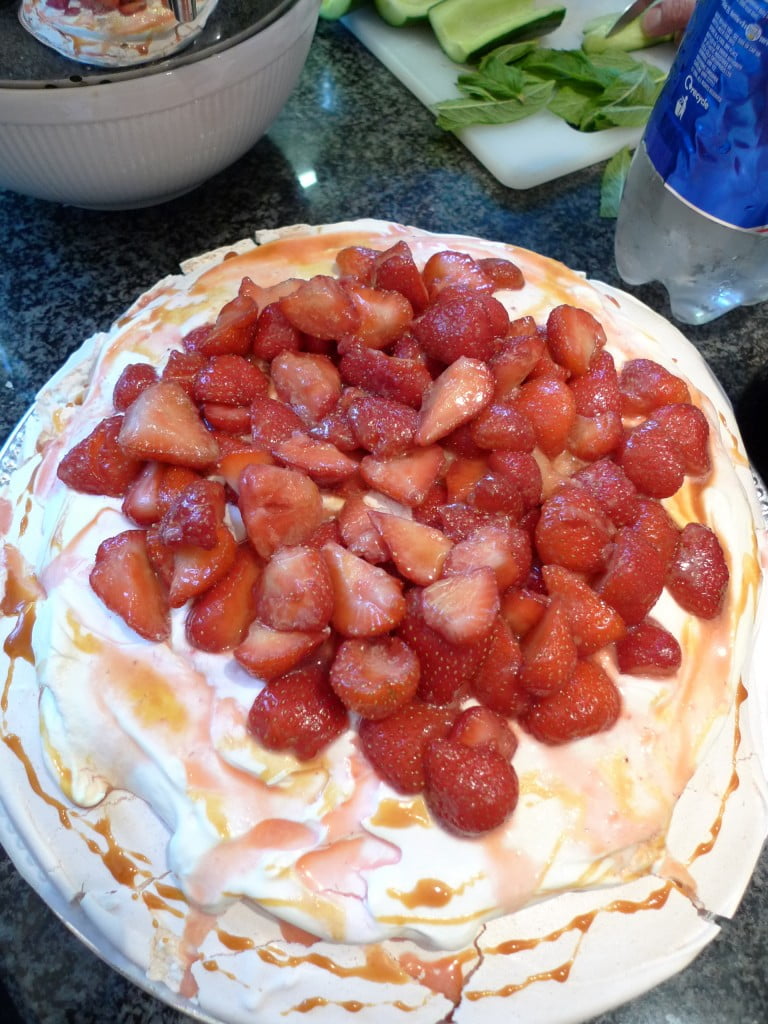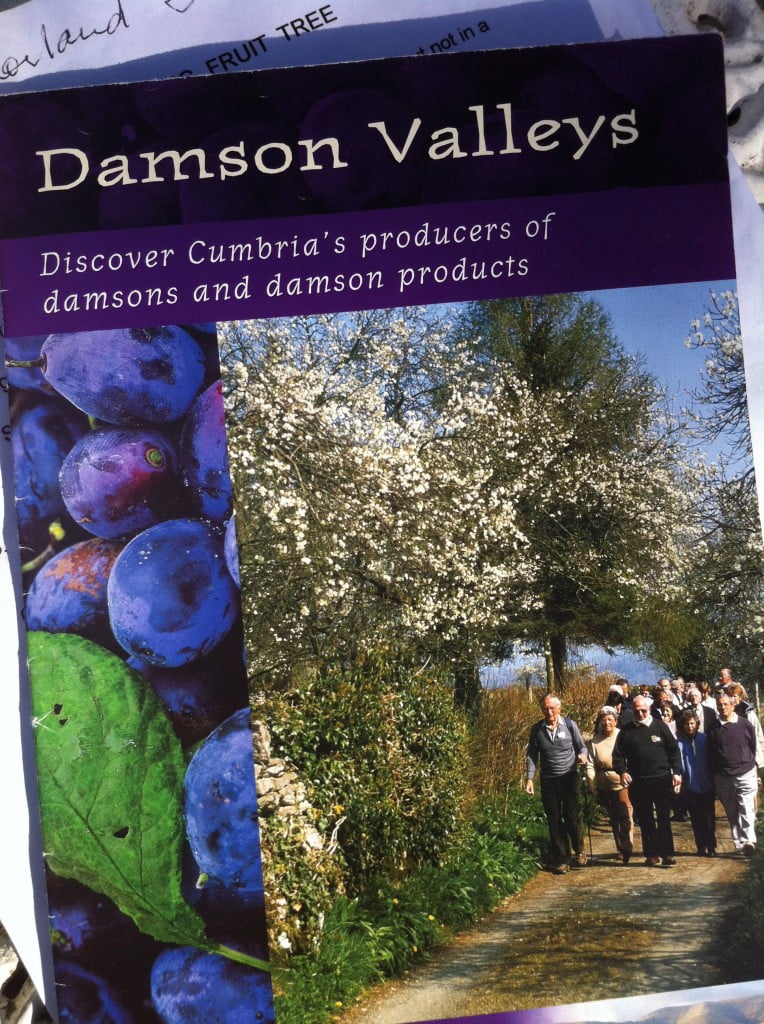

Last autumn I got the damson bug. I’ve always adored the tarter than tart taste of damsons. The deep purple beauties appear in our shops in September and two or three weeks later they’re gone before you know it. The damson season is just too short!
You can eat damsons when they are really ripe but cooking and preserving brings out the best in them. Spurred on by a bare patch of soil in my garden where a wonderful plum tree once grew, I’d jumped on the idea that I could plant a damson tree and in about seven years (quite biblical!) enjoy crop of my own damsons.
I did my research and found the Westmorland Damson Association, based in Cumbria and got on the phone. I talked to Bob Bradley, one of their members about the viability of planting a Westmorland Damson tree in my small London garden. “Yes, why not?” said Bob – “I can sell you a small tree about 2 years old, if you’d like!” and that was that. It seemed like months before the phone rang and it was Bob asking me if I still wanted the damson tree? Yes, definitely – but how to get it down here? Bob and Sarah, Bob’s wife, would bring it down to London on the train as they were coming down anyway. We meet up at Euston Station, got on famously and with the little damson tree in my arms , returned home and put my tree outside in the garden to acclimatise it before planting out on a dry, warm day in July.

Keeping in touch with Bob and Sarah, I’d soon planned a weekend in Witherslack – deep in damson country. I was curious to find out more about the Westmorland Damson and of course, to pick as many damsons as I could bring back with me to London. Enough hopefully to make damson gin, damson cheese, damson jam and one or two other damson delicacies.
In mid September I headed up to Oxenholme Lake District station and 3 1/2 hours later I stepped off the train greeted by torrential rain and a smiling Sarah Bradley. The village of Witherslack (a “wooded valley” in Norse) lies close to two valleys, the Lyth and Winster, famous for their damson orchards.

Damson trees grow very prolifically up here. Damson trees are very hardy, they thrive on the well-drained, limestone soils and benefit from the relatively mild climate of the area. In the past, damsons weren’t just eaten as fruit but were used for dyeing in the textile. Back in the 1930s and 1940s more than 300 tons of damsons were sent down to the jam factories of Lancashire and Yorkshire. The income from the damsons was often used to pay the annual rent of a farm.


I’d been concerned that the rains in August might have spoiled this seasons’ fruit. As we walked towards Bob’s damson orchard with more 30 damson trees (what bliss!!) my fear was banished. There were plenty of trees laden with fruit waiting to be picked. Donning wellies and waterproofs and armed with large white plastic buckets, we began picking in the pouring rain. Now that is serious dedication!

Every year, Bob Bradley opens his orchard to anyone who wants to come and pick his damsons. An exceptionally fine spring this year, with plenty of pearly, white blossom combined with a frost free April, has produced a better than average crop of fruit. An average size damson tree can produce up to 80 kilos of fruit!!

It carried on raining while we picked, my jacket sleeves becoming more and more sodden as I reached up into the leafy branches. Traditionally women picked the fruit hanging from the branches at ground level, while the men stood on wooden ladders to reach the upper branches. With our buckets half full, we lay the damsons out on towels and newspaer to dry them out before nipping inside for a warm up and a cheery cup of tea and back out for a second round of picking – and more rain! Thoughts of all the wonderful things I’d be able to make with my damsons, keeping my spirits up.

Bob pointed out some baby damson trees – suckers, thrown up from the roots of mature trees growing on one side of the orchard. As long as the orchard is not grazed by sheep, these clones will eventually grow into mature trees within 5 or 6 years. I didn’t know sheep liked eating young damson trees! Bob explained that putting nesting boxes in the trees encouraged birds to eat the many parasitic insects such as greenflies which live on and around the bark and leaves of the trees. There is even a plum moth! A tasty takeaway for a fledgling blue tit hungry for it’s supper.

Bob, a retired vet, has lived in the area for over 40 years and as a member of the Westmorland Damson Association and keen fruit tree grower, there isn’t much he doesn’t know about damsons. His knowledge and enthusiasm not just about damsons, apples and other indigenous fruit trees, but plants and wildlife, is very impressive. Bob’s large cage with it’s lively pair of red squirrels which have already bred 5 young ones – a practical contribution to reintroducing a native species against a tide of grey squirels . These five been released into the wild and hopefully there’ll be more to come. I couldn’t resist taking a picture of them. They have a plentiful supply of cob nuts from a handy nearby tree.

Sarah took me for a drive the length and breadth of the Lyth and Winster valleys to see the orchards where damsons have grown for many generations. Many of these orchards have sadly become overgrown and neglected. We saw old damson trees by the side of the road, unkempt and with a smattering of unpicked fruits. We talked to a farmer on whose land the trees were “We just can’t afford to pick the fruit and people don’t make as much home-made jam like they did in the past – they’d rather buy it in the supermarket.”
 There are damsons in other parts of the British Isles but the intense flavour of the small oval Westmoreland damson (a type of Shropshire Prune) lifts it way above any others I have tasted. It is very hard for local farmers with damson orchards to compete with the cheaper imported damsons from Eastern Europe. Transportation costs have soared, combined with a short picking season (just two weeks) and lack of cheap labour in the North West are significant factors. However, a resurgence of interest in damsons along with other traditional fruits (such as gooseberries)and many local farmers sell their damsons to small scale producers who make damson gin and damson beer, along with damson jam and other damson products which are not just sold locally but considerably further afield.
There are damsons in other parts of the British Isles but the intense flavour of the small oval Westmoreland damson (a type of Shropshire Prune) lifts it way above any others I have tasted. It is very hard for local farmers with damson orchards to compete with the cheaper imported damsons from Eastern Europe. Transportation costs have soared, combined with a short picking season (just two weeks) and lack of cheap labour in the North West are significant factors. However, a resurgence of interest in damsons along with other traditional fruits (such as gooseberries)and many local farmers sell their damsons to small scale producers who make damson gin and damson beer, along with damson jam and other damson products which are not just sold locally but considerably further afield.
One local damson grower I met, told me that damsons are even being imported from Eastern Europe, shipped over to Denmark to be destoned and then sent back to the UK where they still manage to cheaper than our native ones. How on earth can this be possible!!!
 For a hearty supper we prepared Morecombe shrimps, egg and cheese in ramekins, locally produced Cumberland sausage (well Cumberland is in the Lake District!) accompanied by baked beetroot, spinach and Charlotte potatoes, all freshly pulled and picked from the Bradley’s garden. Sarah and I swopped dessert recipes while she prepared a Witherslack Damson Cobbler (recipe below) for pudding. An aperitif of damson gin in front of the woodburner warmed us all up. Then to supper washed down with several glasses of Bob’s excellent damson wine – ruby red, full bodied and surprisingly dry. More Shiraz than damson. A unforgettable meal with my new
For a hearty supper we prepared Morecombe shrimps, egg and cheese in ramekins, locally produced Cumberland sausage (well Cumberland is in the Lake District!) accompanied by baked beetroot, spinach and Charlotte potatoes, all freshly pulled and picked from the Bradley’s garden. Sarah and I swopped dessert recipes while she prepared a Witherslack Damson Cobbler (recipe below) for pudding. An aperitif of damson gin in front of the woodburner warmed us all up. Then to supper washed down with several glasses of Bob’s excellent damson wine – ruby red, full bodied and surprisingly dry. More Shiraz than damson. A unforgettable meal with my new

I’ve already planned my next visit to “damson country” in early Spring to see the white damson blossom, and enjoy the annual festivities of Damson Day (Sat, 14th April 2012) organised by the Westmorland Damson Association. The WDA campaigns to promote the use of local damsons and by so doing, ensuring the continued survival of existing orchards. They offer free help, advice and access to grant aid for anyone wanting to restore or create new orchards. For more information, telephone 015395 68617 or email enquiries@lythdamsons.org.uk

WITHERSLACK DAMSON COBBLER
For the base:
1 kilo damsons
caster sugar, about 227g
water, enough to cover fruit
For the scone topping:
2 oz (57g) butter
8 oz (227g) self-raising flour
1 tspn baking powder
1 oz (28g) caster sugar
fresh or sour milk to mix
Stew the damsons, remove stones and put puree into a greased pie dish. If you haven’t got time or inclination to puree the damsons – leave them in but don’t forget to warn people before they start eating! Sarah left the stones in and we recited the traditional rhyme, “ Tinker, tailor, soldier, sailor, rich man, poor man beggar man, thief.” I think I ended up with a soldier – perish the thought!
Mix flour, baking powder and caster sugar and rub in butter.
Mix to a dough with about 7 tbspn of milk, roll out on a floured board and cut into small rounds. Place the scones overlapping each other in a ring on the damsons, brush with milk and cook for about 30 mins near the top of a fairly hot oven.


